Motorcycle Modifications: Front End Swaps
Last time we discussed the merits of changing your wheels, and if you’re considering such a move, then you may well be considering a complete front end swap, which will not only gain you your new front wheel, but can also make it far easier to attain, as well as giving you bonuses in suspension and brake upgrades at the same time.
Much like the case with wheels, it’s easy to assume that a front end swap (comprising forks, yokes, wheel and brakes) will be done simply for performance reasons, but in the big, wide world of customising this is not the only reason, by far.
Girder forks
In the current climate, with retro style being as popular as ultra-high tech, many bikes are being built with what are sometimes considered as being old technology. However, with modern components and quality control, they can be significantly better than the equivalents built seventy or eighty years ago.
Girder forks are perhaps the oldest style of fork, although they have been used in a modern race application, notably on the incredibly successful, mould-breaking Britten race bike, as well as a handful of limited number production bikes.
Springer forks
The sort of springer forks that’re available off the shelf nowadays are pretty much exactly the same design as those used on production bikes a century ago. Although they are of better quality, thanks to modern alloys, closer tolerances and improvements in spring and damper quality. And they still look just as cool.
Fork swap
Perhaps the first thing that springs to mind when a fork swap is mentioned in casual conversation is the upgrading of conventional telescopic forks to a higher quality, invariably ‘upside-down’ version of teles, which in this day and age usually means those with radially-mounted brake calipers and, more often than not, some kind of trick fork stanchion coating such as the black ‘DLC’ (diamond-like coating).
Steering stem, and lock stops
Fitment of any kind of non-standard fork – whether they be telescopics, girders or springers – boils down to just a couple of issues. The steering stem, and lock stops. While differences in steering stem girth can be catered for by sourcing alternative bearings, or using ‘top hat’ style spacers, these won’t be of any help if the stem is too long or too short.
Okay, if it’s too long it can be cut down and re-threaded, but the usual answer is to have a stem made to suit the headstock and standard bearing, thus meaning if the bearings ever need changing in the future, they’re easy to source.
If you’re lucky, then you might even be able to simply bolt the front end straight in – this is the case with just about every oil-cooled Suzuki GSX-R, for example, but it can also be cross-brand applicable, as some later model Suzuki sportsbike front ends fit straight into some Kawasaki air-cooled four frames.
Regarding lock stops, even if a set of yokes happens to bolt straight into a different frame, the chances that the lock stops will also match is minimal.
Depending on the type of lock stop, there are various ways around the issue, either by adding new lugs onto the frame, or by fitting bolts into the bottom yoke. It’s possible to create adjustable lock stops, which could prove useful, although if the fuel tank, bars and forks are going to stay the same in the future, perhaps a little unnecessary.
A neat way of having ‘invisible’ lock stops is to incorporate them actually inside the steering head, a style often used on professional custom builds, although it does take some very clever three-dimensional thinking to be able to work out how to make and fit them.
Of course, if you have the budget, a front end swap can be made easier, and fancier, by using a set of custom yokes. This neatly sidesteps the issues of stem and steering stops as a one-off set of yokes will have to have them made anyway!
Custom yokes
Big billet yokes with multiple pinch bolts are very striking – or help with handling, either by having added or reduced rake built into the yokes, or having an adjustable offset, so that you can tweak the trail and thus handling characteristics.
Yokes that give additional rake are often used with chopper-style bikes in countries that have regulations forbidding the modification of frames, so by using raked yokes, longer fork legs can be fitted to give that all-important raked-out front end vital for a chop.
A set of aftermarket yokes, or to be more precise, a new top yoke, can also overcome the issue brought about by fitting later model sportsbikes forks into an earlier model bike, due to the fact that forks have become shorter over the years.
Fitting, say, some GSX-R1000 forks into a GSX1100 Katana or Z1 will greatly reduce the ride height (and therefore ground clearance), and in extreme circumstances can create some nasty handlng characteristics. By using a stepped (occasionally called a ‘gullwing’) top yoke, then the forks are effectively mounted lower down, thus raising the front end and countering the shorter forks.
Another issue that has to be looked out for when a front end has been swapped is that there is clearance behind the new front wheel and mudguard and things such as the exhaust headers, radiator and/or oil cooler. And you really need to check before you go flat out down the local bypass and only discover the lack of tyre / exhaust clearance when you jam on the brakes for that tight roundabout at the end…
And then there’s hub centre steered front ends and other ‘funnies’, as used on the Bimota Tesi, Ner-A-Car and Elf/ Honda GP race bike. However, they’re far too confusing for a short article such as this, maybe we’ll take a closer look at them in the future?…
IMPORTANT NOTE: It’s essential to speak to your insurer before you make any modifications to your motorcycle so you can understand the policy implications. Some modifications will dramatically increase your premium, and other modifications might make it very difficult for you to find a company that will insure you at all. Failure to disclose any modifications can also result in your insurer refusing to pay out on a claim, especially if the modification contributes to the claim.
Always do your research properly, consult an expert, speak to your insurer and make sure you’re fully informed of the risks involved of your proposed modification. Modifications should always be done to a professional standard and maintained appropriately.
So what do you think? Are you considering a complete front end swap on your motorbike? Why not tell us about it below…

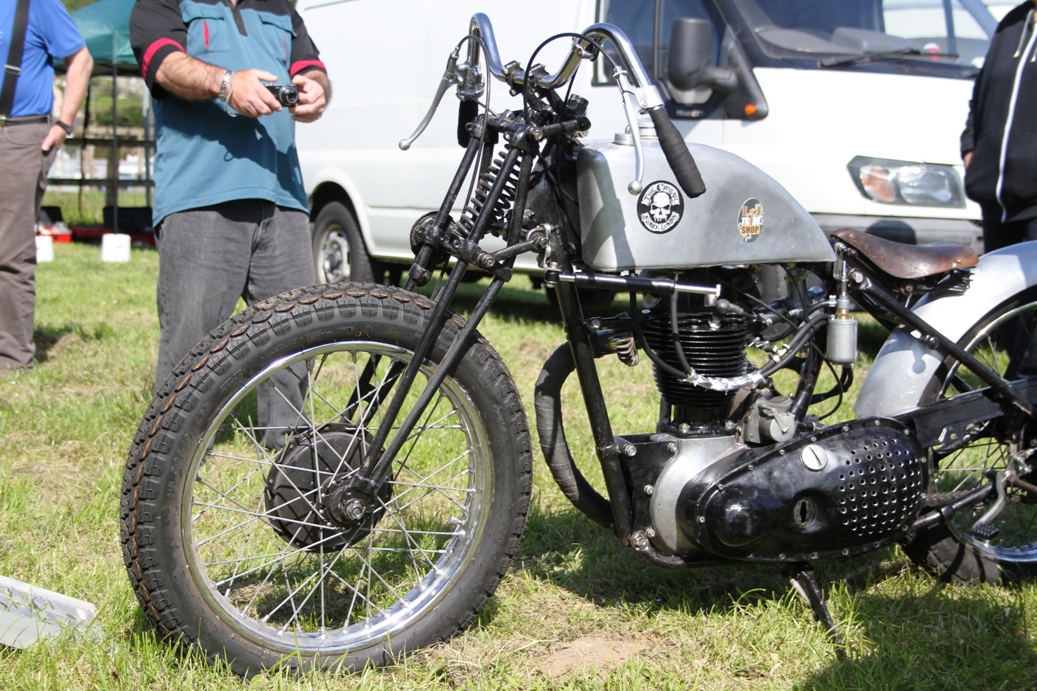
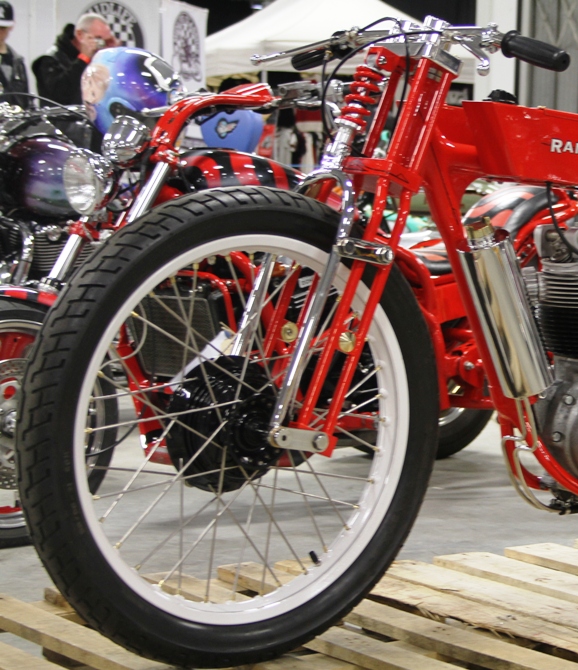
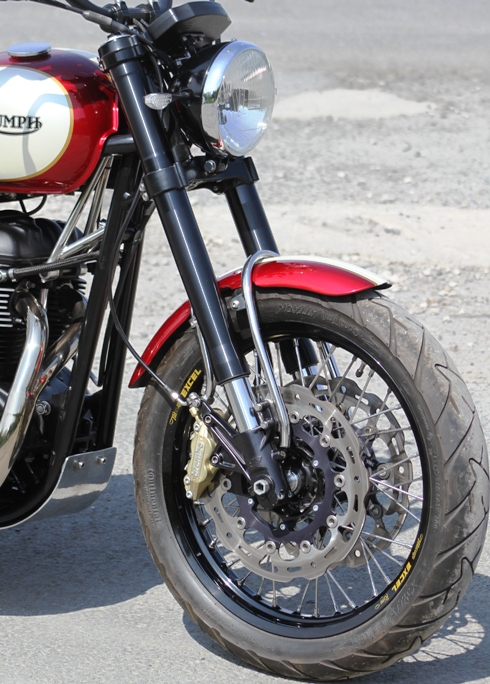
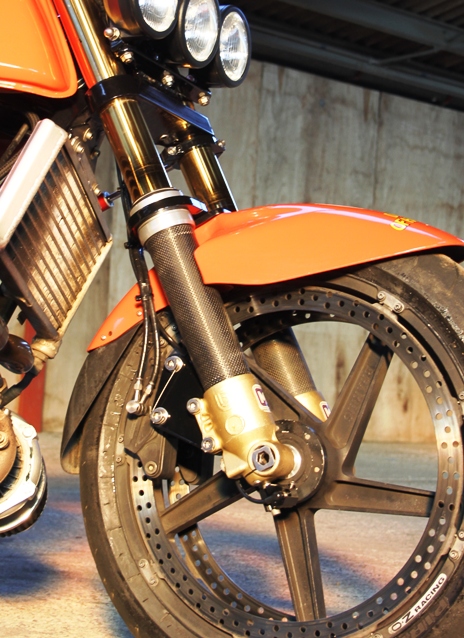
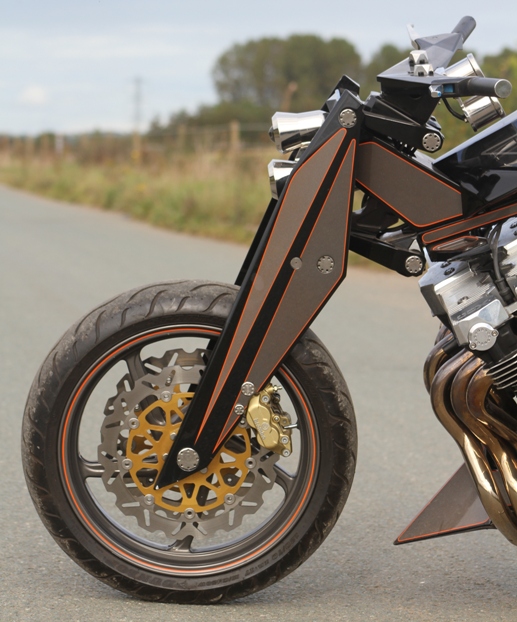
One comment on “Part Four: Up Front”
can someone give a factual answer to my question, would an 18 or 19 inch tyre give better cornering grip than a 16 or 17 inch tyre on a road motorbike, I see that racing bikes don’t use small diameter wheels.
thanks, Chris.